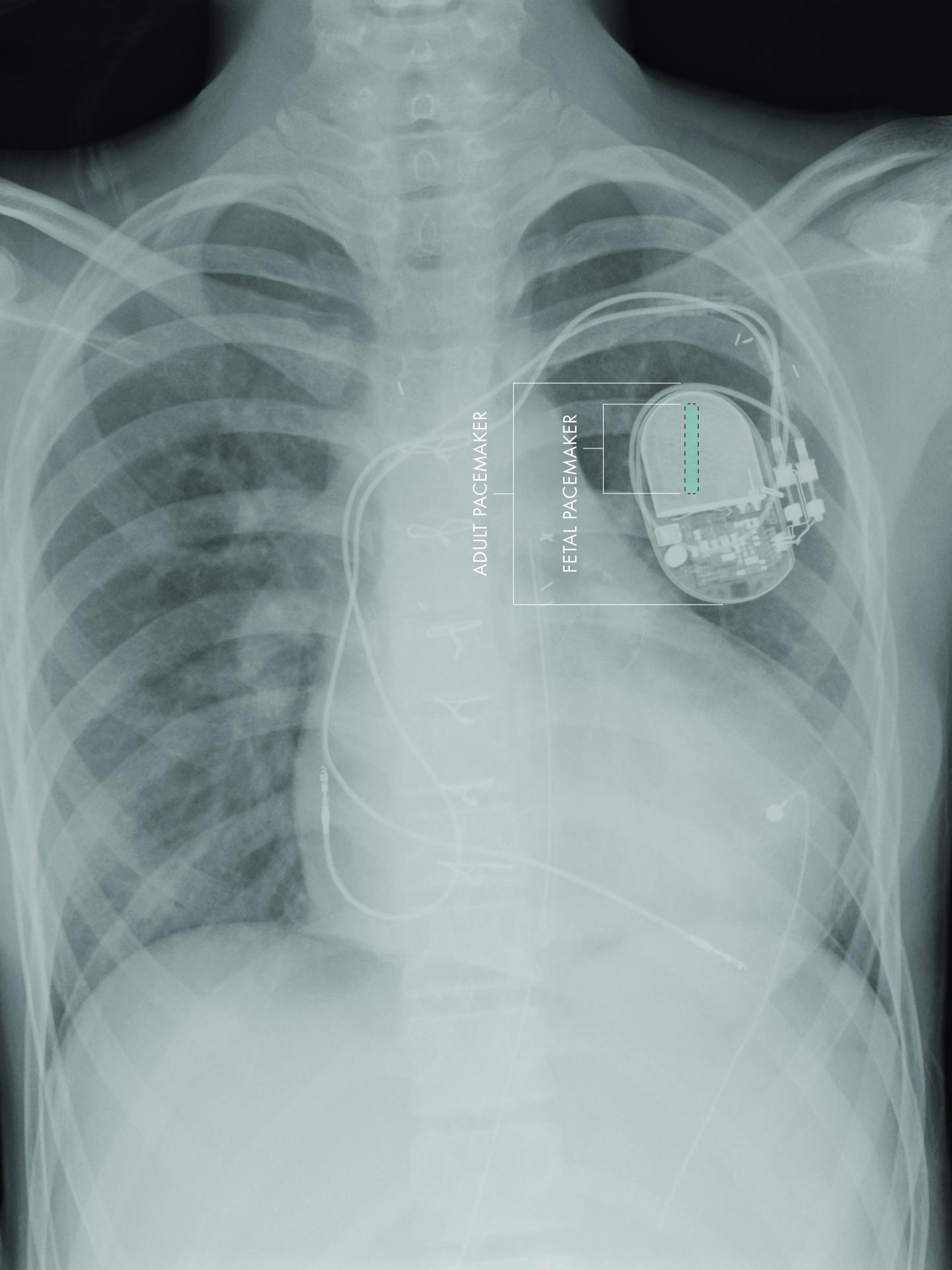Although the condition can be diagnosed in utero, all attempts to treat the condition with a standard pacemaker have failed. Each year, approximately 500 pregnancies in the U. S. are affected by such fetal heart block - those babies may soon have the perfect solution.
A team of investigators has developed the first fully implantable micropacemaker designed for use in a fetus with complete heart block. Preclinical testing and optimization is now reported in Heart Rhythm and this micropacemaker has been fasttracker with designation as a Humanitarian Use Device by the US Food&Drug Administration (FDA).

The comparative sizes of fetal and adult pacemakers. Credit: Children's Hospital Los Angeles
"Up until now, the pacemaker devices that have been used in an attempt to treat this condition in a fetus were designed for adults," said Yaniv Bar-Cohen, MD, pediatric cardiologist at CHLA and lead author on the paper. "We have lacked an effective treatment option for fetuses."
"We now have a pacemaker that can be implanted in utero, potentially without harm to the fetus or the mom," said Ramen H. Chmait, MD, Director of the CHLA-USC Institute for Maternal-Fetal Health. "This novel device provides a real opportunity to prevent miscarriage and premature birth in babies affected with these abnormalities."
The size of the adult device requires a small part to be implanted in the fetus and the rest to remain externalized. This design has uniformly failed, likely due to fetal movement causing the electrodes to become dislodged from the heart.
"Building on our experience of using microfabrication techniques to create biomedical devices, we have developed a micropacemaker small enough to reside entirely within the fetus," said Gerald E. Loeb, MD, professor of Biomedical Engineering at the Viterbi School of Engineering at USC. "This will allow the fetus to move freely without risk of dislodging the electrodes."
Additional members of the investigational team include: Michael J. Silka, MD and Jay D. Pruetz, MD, Children's Hospital Los Angeles; Adriana N. Vest and Li Zhou, Department of Biomedical Engineering, USC; and Catalina Guerra, DVM, Los Angeles Biomedical Research Institute, Harbor-UCLA. Funding has been provided by NIH grant R01HD075135, the Southern California Clinical and Translational Science Institute, the Robert E. and May R. Wright Foundation, and the Coulter Foundation.





Comments